Let’s spend some time uncovering the peace in our homes and in our lives. There is peace to be found everywhere, I believe it already exists, but along the way we’ve snuffed it out with clutter, overflowing schedules, overwhelm and overstimulation, and a lack of intention. So let’s reigniting the passion we once felt about our home as we sift through each room, clearing out the unnecessary in order to reveal the beauty that is already present.
And then, once the peace is uncovered, we’ll talk about how to maintain it through our mindset and future purchases. Our home, the things we own, don’t own, buy, don’t buy, hold onto – all of it has to do with our story, our thoughts, our mindset. Neglecting to speak on this topic would do your home a disservice.
My challenge to you: before reading the rest of this blog post & diving into each place of your home, spend 5 minutes writing out what you’re grateful for. And over the next couple days or weeks ask yourself, and answer honestly, the following questions:
1. How do I feel about the current state of my home?
2. What does peace feel like and sound like to me?
3. Thinking back to my childhood, what do I remember being said, modeled and experiencing in regards to money, purchases & possessions?
We want our hearts and minds to be in a healthy place when discussing and simplifying our home. It’s an honor to be the one who declutters, cleans, sifts through and decides what stays and what goes. And I’m eager to be the one guiding you. Let’s do it!
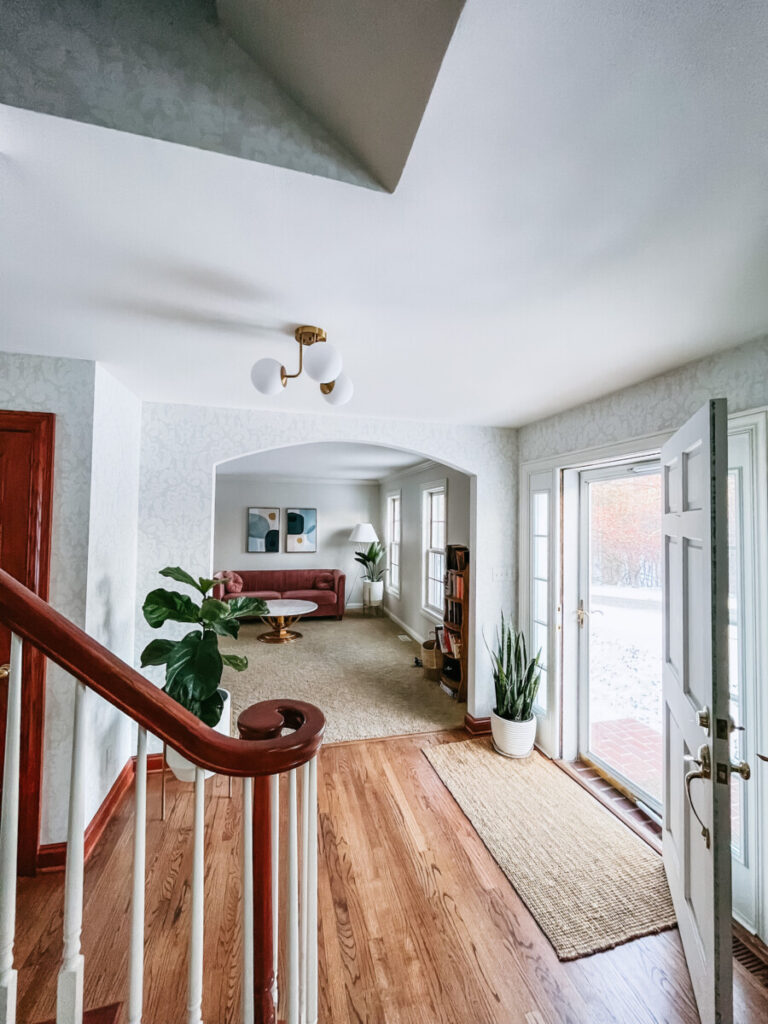
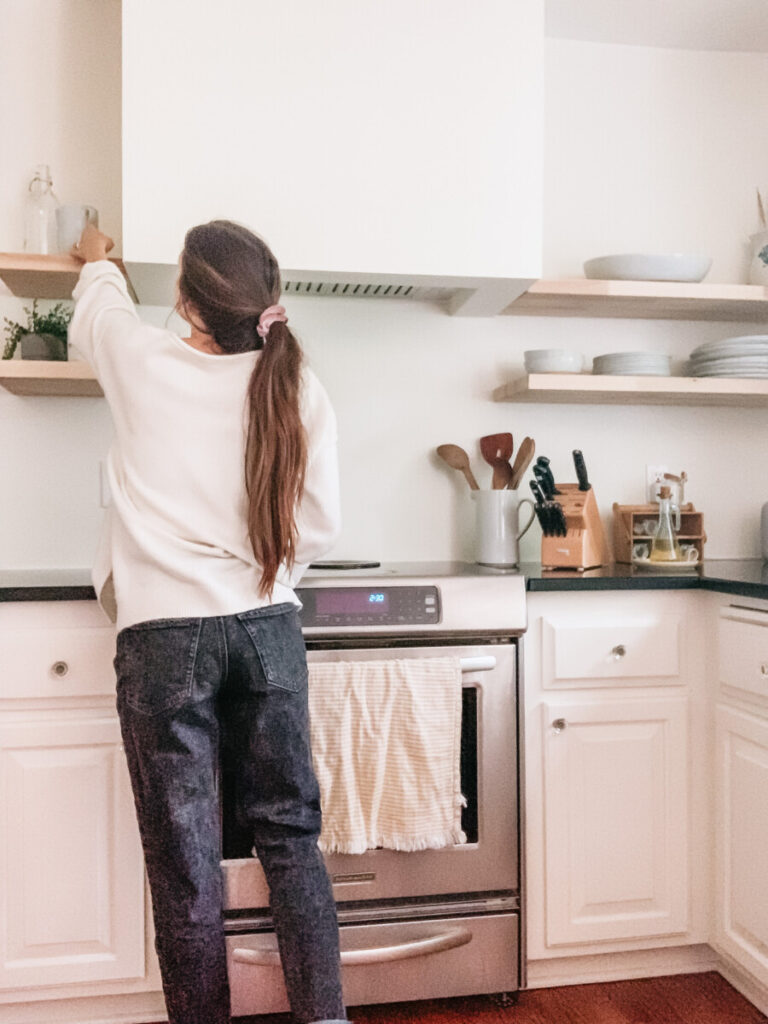
01. Cleaning Supplies
Why start here? Because every area of our home needs two things: simplification & cleanliness. So we’re tackling both with simplifying our cleaning supplies.
Simplifying our cleaning supplies creates peace of mind and a clutter-free under-the-kitchen-sink-cabinet.
Have you heard the term ‘greenwashing’? It’s when companies use marketing to trick consumers into thinking they are purchasing a natural product, when in reality, what they are buying isn’t natural at all. Unfortunately the majority of the ‘natural’ cleaning brands out there do this and because of it, our hormones are mimicked and disrupted, we experience the effects on our skin and complexion and other issues are arising without us knowing due to these chemicals and ingredients flowing through our bloodstream.
After learning this, my husband and I made the switch to the Thieves home products. They became our easy button! No fragrances, phthalates, parabens, bleach, formaldehyde, or toxic chemicals in these products – just the power of plants! And, not only are they better for our health, but since Thieves is highly concentrated & you reuse the same glass bottle, we’re also contributing to bettering our planet with less plastic and waste.
I used to store a dozen spray bottles, all for different things, under my kitchen sink. And now, I have 1 spray bottle. I use it for every surface, every area, stain, room, toy, etc. Reducing the amount of bottles under my sink makes cleaning quick and easy, and honestly, enjoyable (the smell of Thieves is warm and spicy)!
I spend less…
– time winnowing through bottles under my sink
– time making decisions about which cleaning product to use
– time at the store because it gets shipped to my door
– money because it costs $2/bottle
I’ve done my research and now I’m challenging you to do yours. Research companies and brands, cleaning supplies, toxic ingredients and the harmful effects it has on your body, home, family and the world.
Simplifying the amount of cleaning supplies I own has brought life, health and peace into my home. And it will for you too! Take 10 minutes today and sift through your cleaning products.
Here is the perfect set to start with, it’ll help you make small shifts in your home. The other cleaning items I use are: baking soda, epsom salt, essential oils (especially lemon and tea tree), glass spray bottles and a fairly minimal mop that I love.
And if you’re new to Thieves, here is my personal cheat sheet with my top 5 toxic-free cleaning recipes.
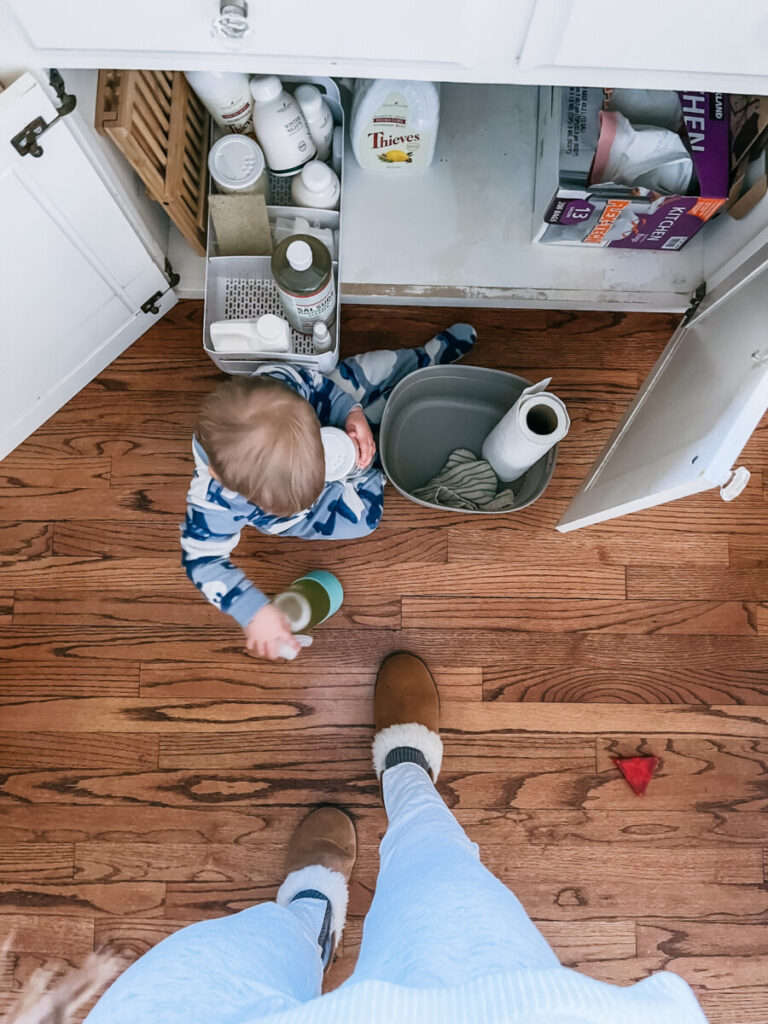
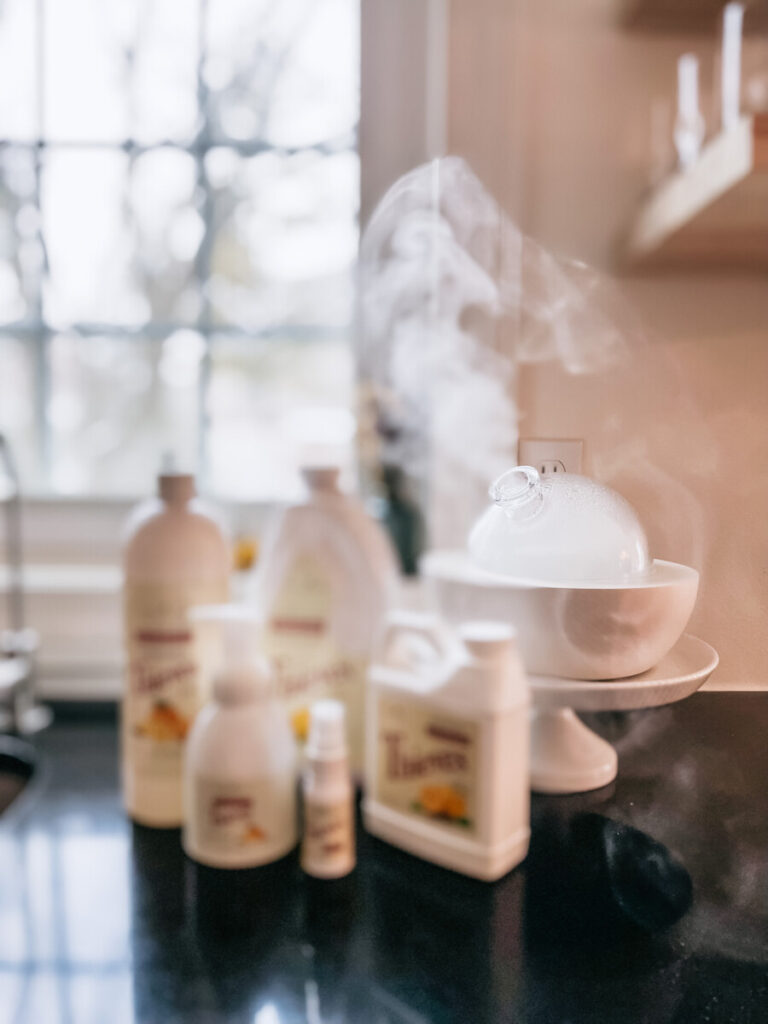

02. Living Spaces
What are the rooms and areas of your home you spend the most time in? For us it’s our living room and fireplace room, the two rooms are connected and these rooms are where we drink coffee in the morning, read with the kids, hang with friends, play with the kids and relax at night before bedtime. These rooms get a lot of action on a day-to-day and weekly basis.
These rooms also get lotsa crumbs and handprints, toys may be scattered throughout our days and coasters might get moved around, but for the most part, they are easy to put back together and quick to clean. I say easy and quick because we have a simple system: everything has a home. Toys, books, magazines, fire tools, blankets. They all have a specific place where we & our kids know where to place them when we’re cleaning up. Within 5-7 minutes, with the help of our toddlers, we can have everything back in its “home.”
Look at your living spaces and ask yourself:
1. What do I want to feel when I’m in these rooms?
2. What in this room is stressing me out?
3. What in this room doesn’t serve a purpose?
4. Can certain items (books, small toys, etc) be organized better or be completely removed?
Examples of possible clutter: small plants, books on tables, toys that do not have a home, candles, too many pillows, drawers stuffed with miscellaneous items, random decor on side tables.
If you have kids, even as young as 12-18 months, have them help with this process! Teach them the new system and show them where their toys and books now belong. We love involving our kids in our cleaning and tidying-up process. Delegating tasks and taking the time to teach our kids has transformed our home.

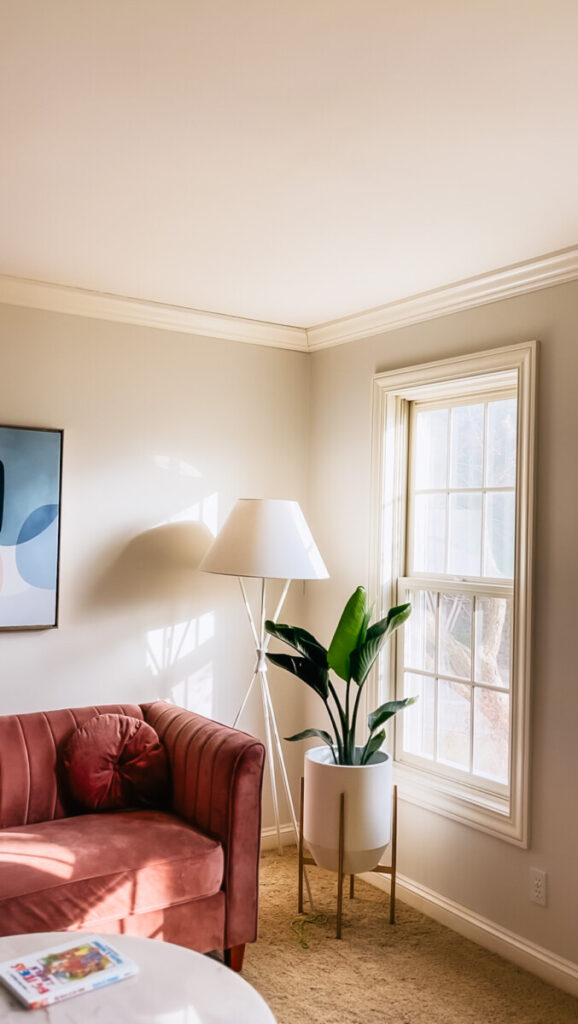
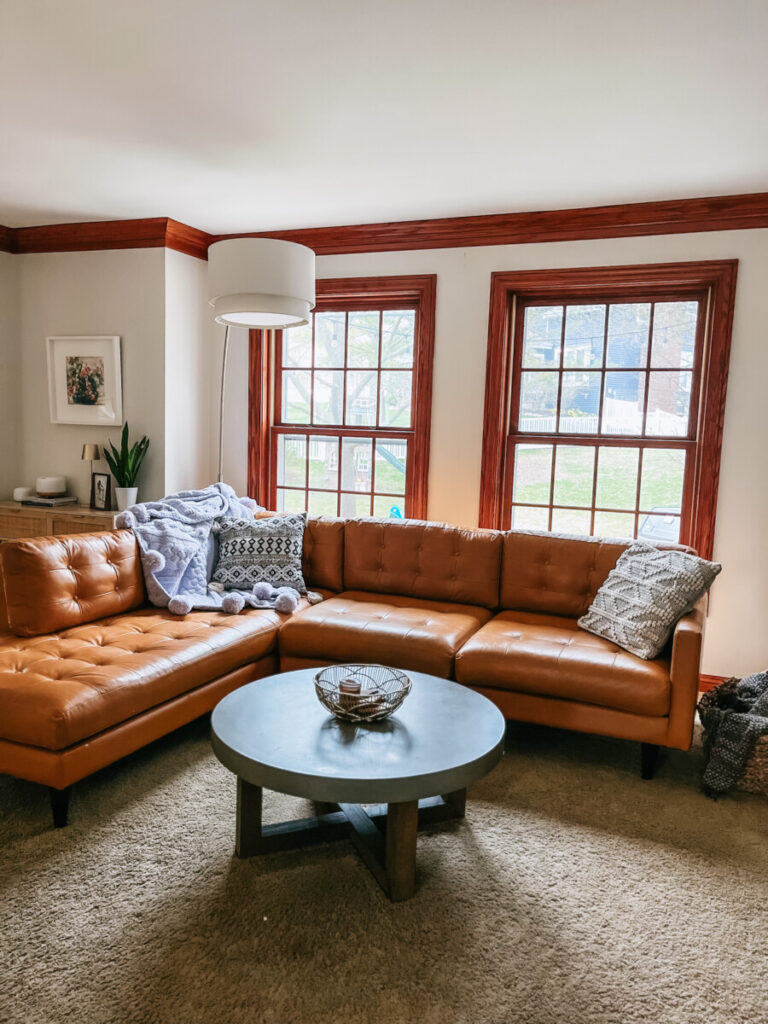
03. Kid Toys
Tell me if you relate: it takes longer to pick up toys than to actually clean the room the toys are scattered in?
Parents, buckle up.
The amount of toys you have in your home is because of you, not your kids. The mess of toys in your home is because of you, not just your kids. As parents, we are the gatekeepers, we decide what comes into our homes, what stays and what leaves. As parents, we are the model for our kids when it comes to our home (and everything else). And as parents, we have the authority to say when and how our homes will be cleaned up.
Let’s begin by asking ourselves some questions:
1. What toys do my kids love love love? And why do they love them?
2. What are my kids passionate about? How can I stir this in their heart and life?
3. What toys could we do without as a family?
4. What are my thoughts about the things I own? How am I teaching my kids to respect their home and their toys? How well am I modeling this?
5. Do we play outside often enough?
6. What is my idea or thoughts around “play”? Are toys here just to keep my kids “occupied”?
7. Do my kids clean up their toys or am I doing it for them?
Having a system to get rid of, declutter and simplify toys is not the solution because the toys aren’t the problem. Our mentality, our hearts, thoughts and actions surrounding the things we own is the problem. So beginning here will help fix the breakdown of the problem.
Did you know that American children make up 3.1% of the world’s population but accumulate 40% of the world’s toys?
And did you know that the average American household contains 300,000 items?
If we think our kids have too many toys, how many “toys” do we own? I would argue that we are one of the most overstimulated, under-disciplined nations in history.
In short, more toys = less creativity + more stimulation.
My challenge for you is this: answer the questions above with raw honesty. If you’re married, have a conversation with your spouse.
Remember, peace already exists in your home. You simply have to uncover it. Let’s make it our aim to be part of the necessary change. It begins in our homes. And it begins with ourselves, as parents and in our marriages and relationships with our kids.
The breakdown of the problem with toys is rooted with us, and whether or not you took the time to respond thoughtfully to the questions I asked in the previous post (if you did, this process will be easier), you can still digest what I’m about to share. We’re going to dive into the action steps to simplify toys.
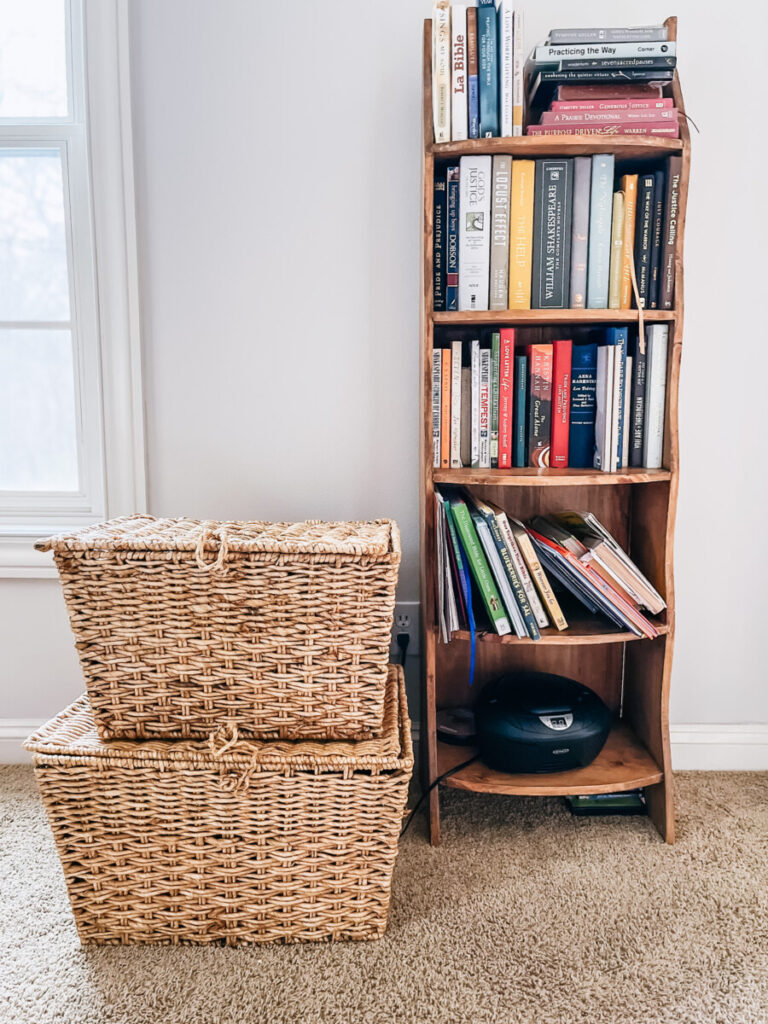
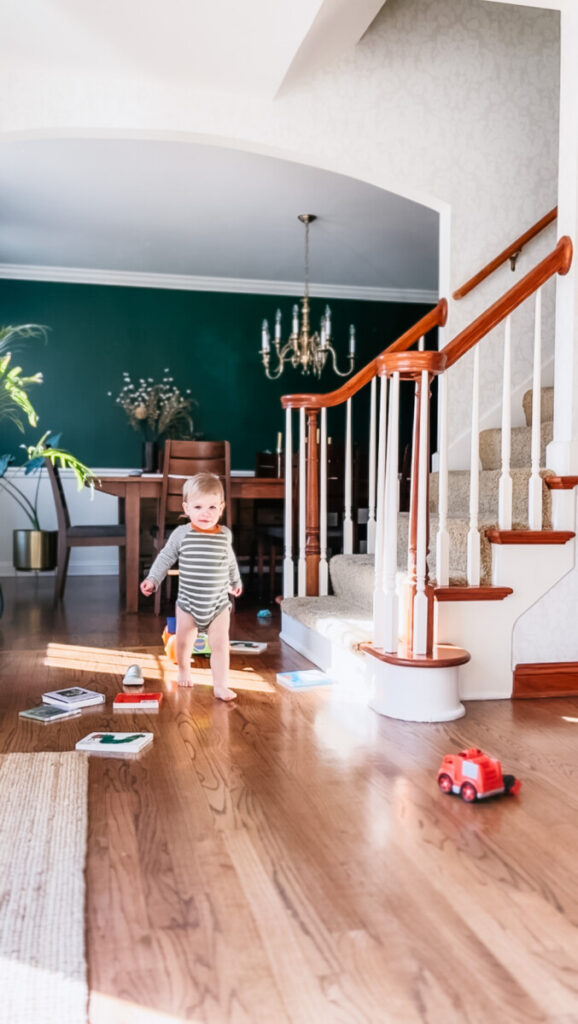
I’m a big believer that a system has to be in place BEFORE you declutter and sift through toys.
Our system: each toy has a “home” – it’s that simple.
– Toys that my kids love and don’t want other kids to ruin stay in their bedrooms
– Toys that are minimal stay on main level
– Toys that are big and/or noisy stay in the basement
– If books don’t fit on the bookshelf, they need to go somewhere else
Once you have assigned a “home” for toys, begin to sift through them. Ask yourself and your kids which toys they love love love and actually play with.
To make it easy, make 4 piles:
1. Donate
2. Keep (for present use)
3. Save (for future babies/kids)
4. Rotate (seasonal toys)
Get rid of the donate pile right away, place the “keep” toys in their designated “homes,” decide where you will store the “saved” toys and make a “home” for where the seasonal toys will go.
Pro tips:
– The size of the bins/baskets matter, the smaller the better
– If you don’t want to get rid of toys for future kids, save 1 small bin of toys
– Have a daily clean-up routine. We do 1-2 “resets” daily with our kids
It’s not up to me how many toys are in your home, but a good rule of thumb: if a 2 year old cannot pick up a room of scattered toys within 5-10 minutes, maybe you have too many toys.
04. Kitchen & Food Storage
I spend around 5 hours/day in my kitchen, so I need it to be clutter-free, simple and clean in order for me to function well. What are some of your natural rhythms in your home, how often do you cook? Is it from scratch or more freezer meals? How functional do you need your kitchen and pantry and fridge to be?
A few things to always keep in mind:
– Keeping drawers only 50% full is less stimulating, reduces clutter and it’s easier to clean
– If an item hasn’t been used in the last 4 months, get rid of it
– Shifting our mindset to borrowing from others and asking for help. If you truly need a specific item for a specific meal or holiday, ask around!
– For seasonal items, put them either in a designated area in the kitchen or somewhere out of the kitchen but accessible to pull out when needed
– No need to have two or three of a particular item. You’d be surprised how much you can do with a single spatula
39% of all food waste in America is from our homes. Proper storage and a simple system can help fix this problem.
I understand all families eat differently and even within one family there can be several health issues, dietary restrictions and eating preferences, but a simple system to organize your food will make it easier to cook for everyone.
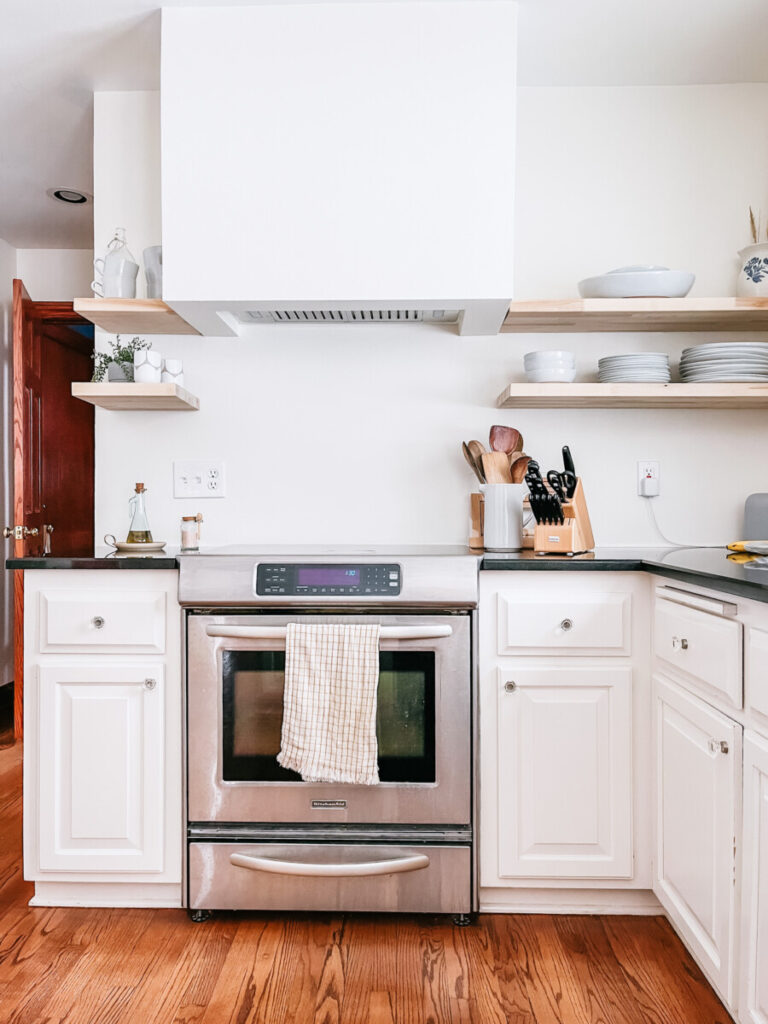
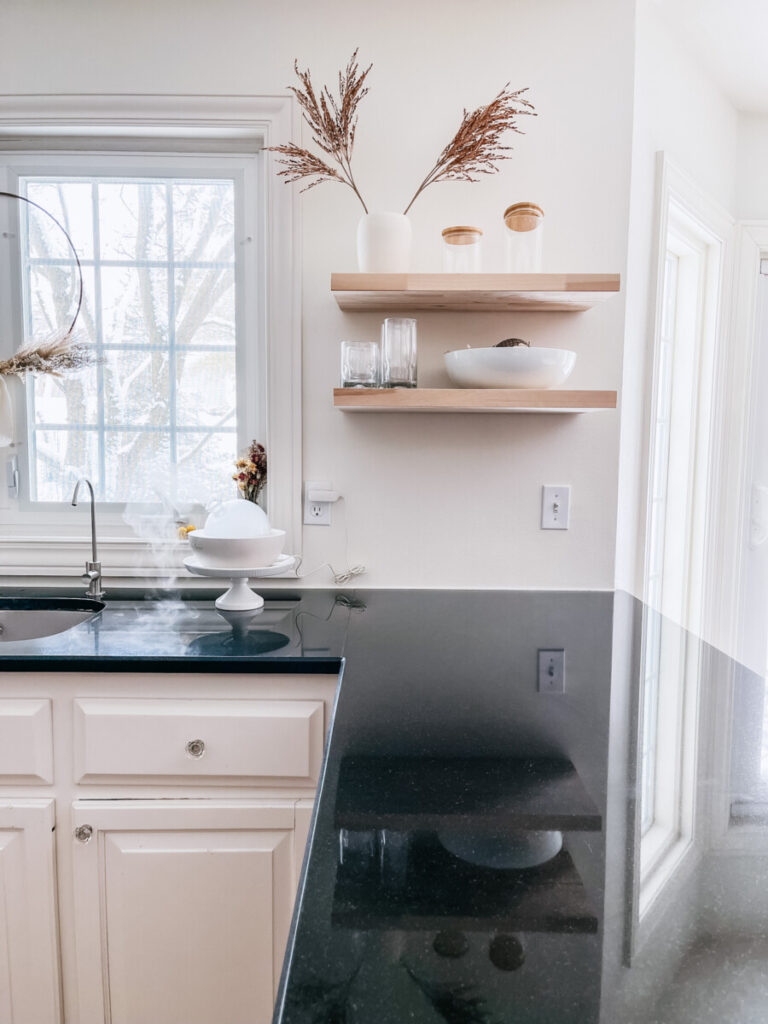
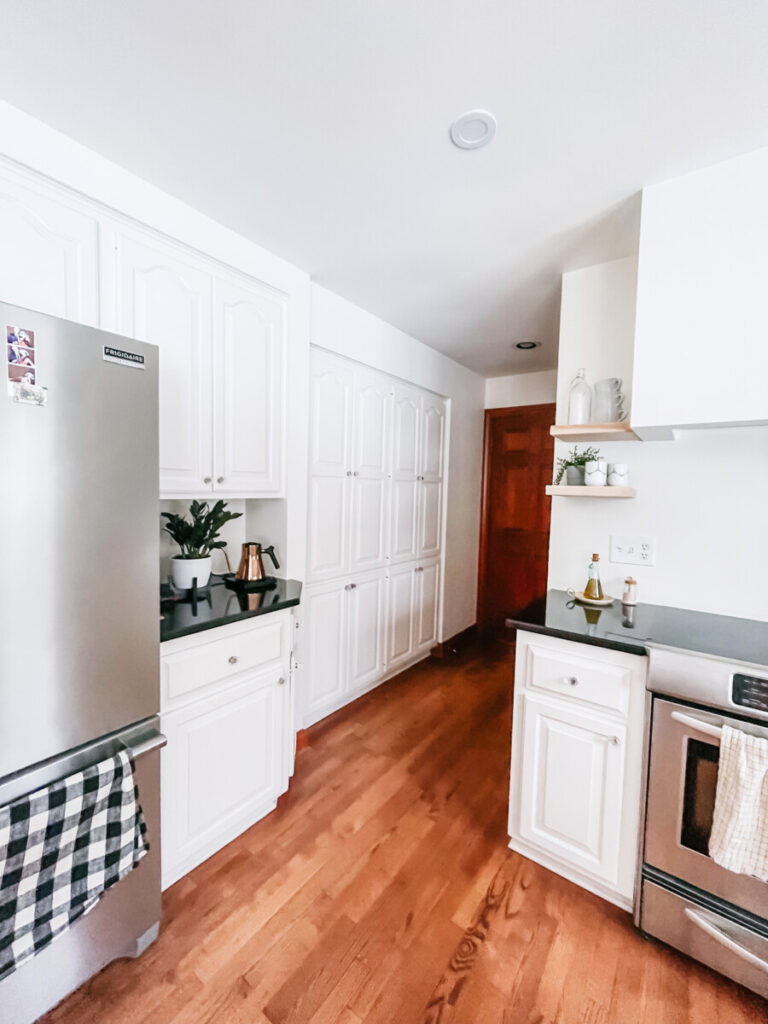
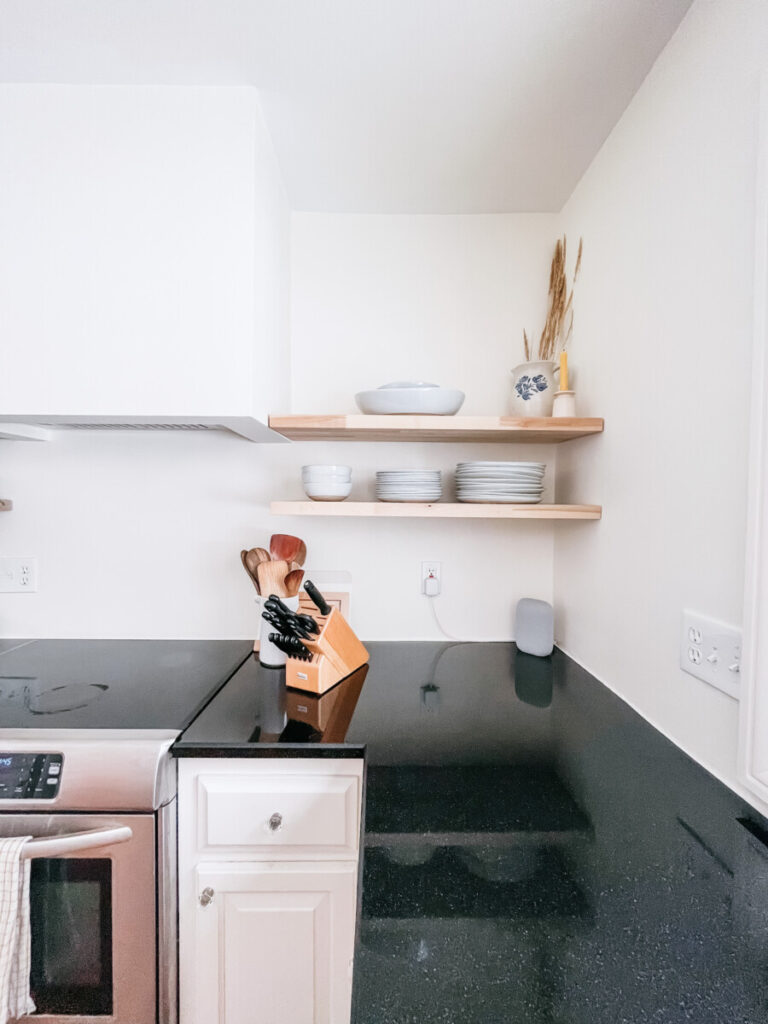

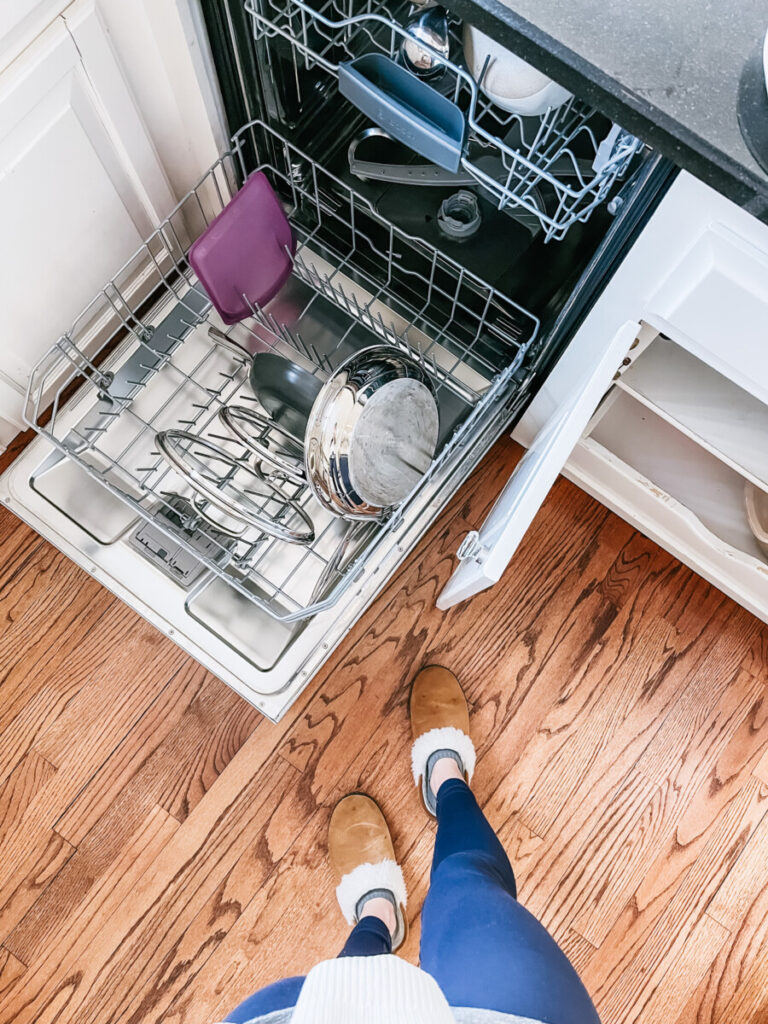
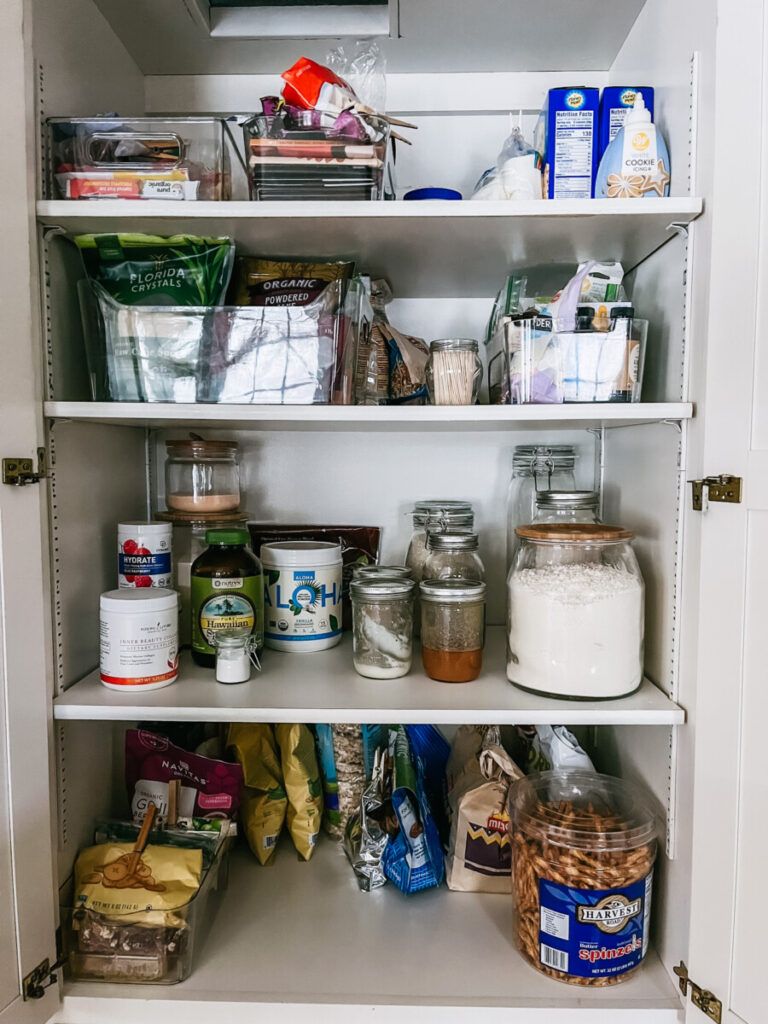
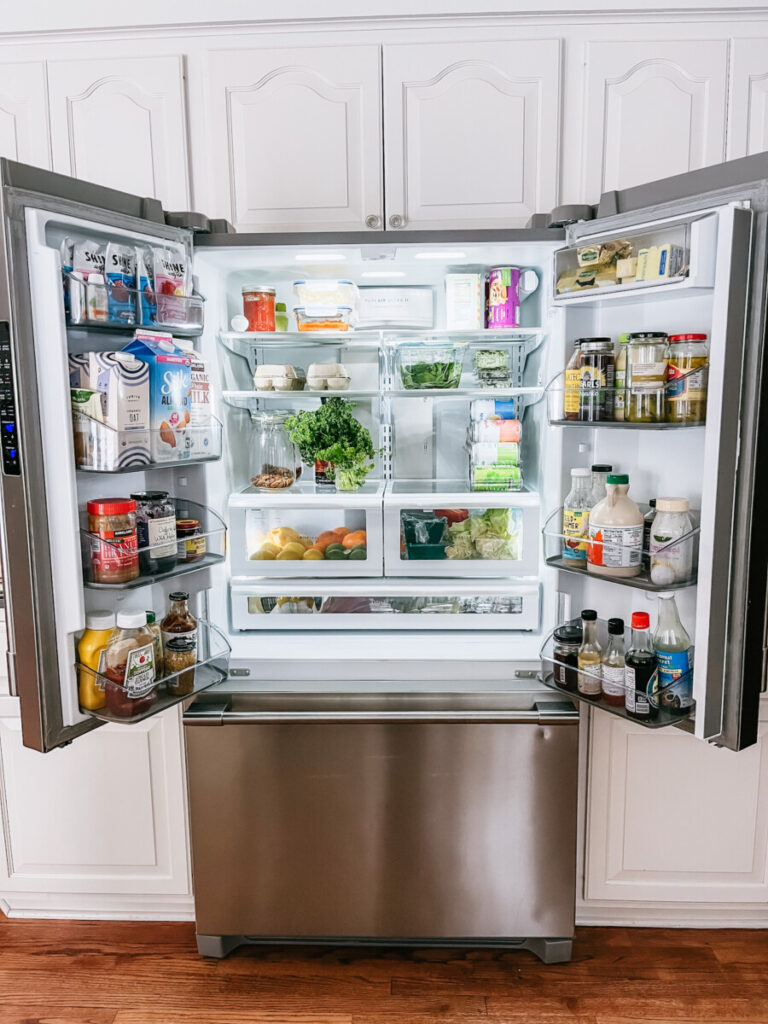
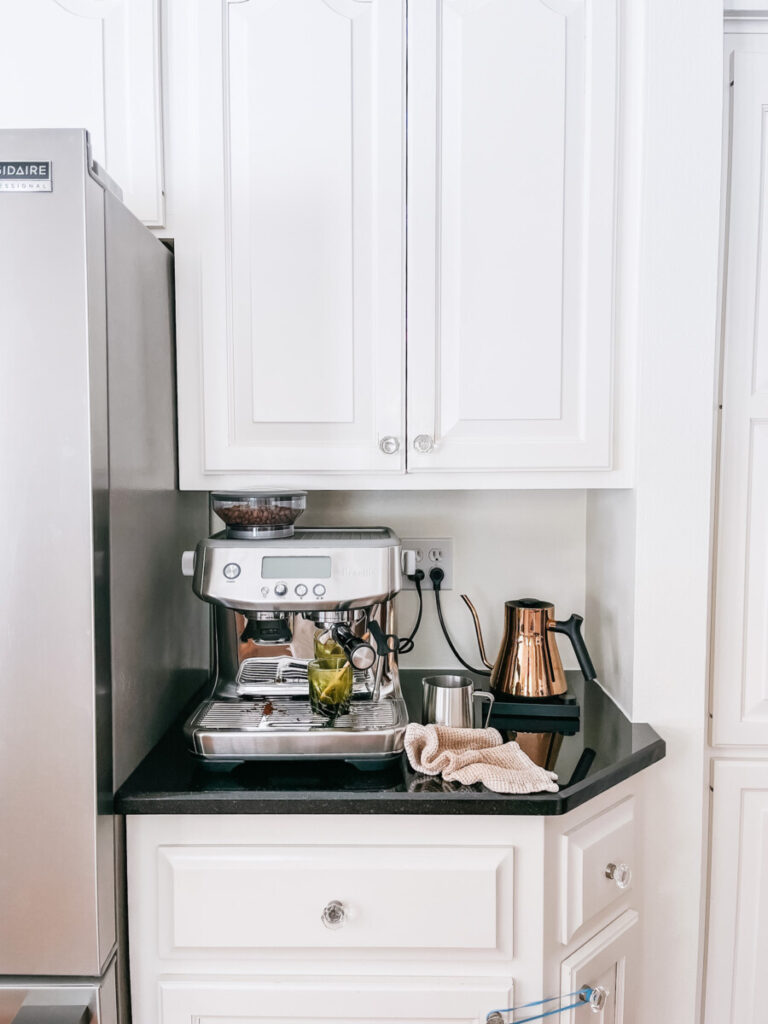
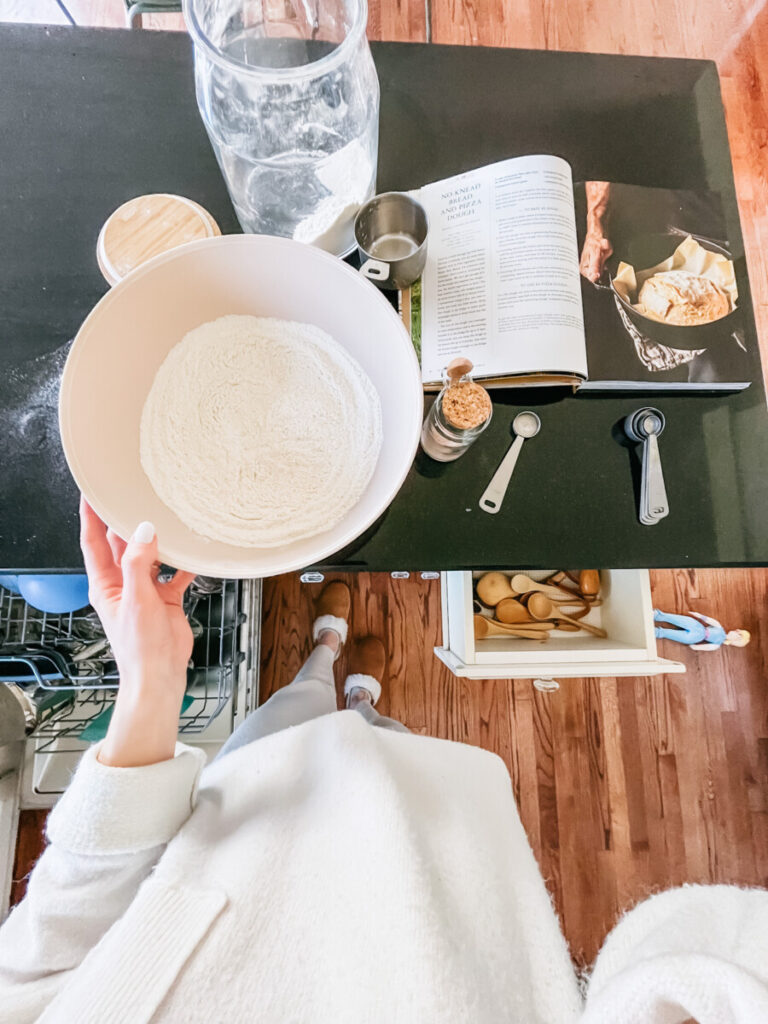
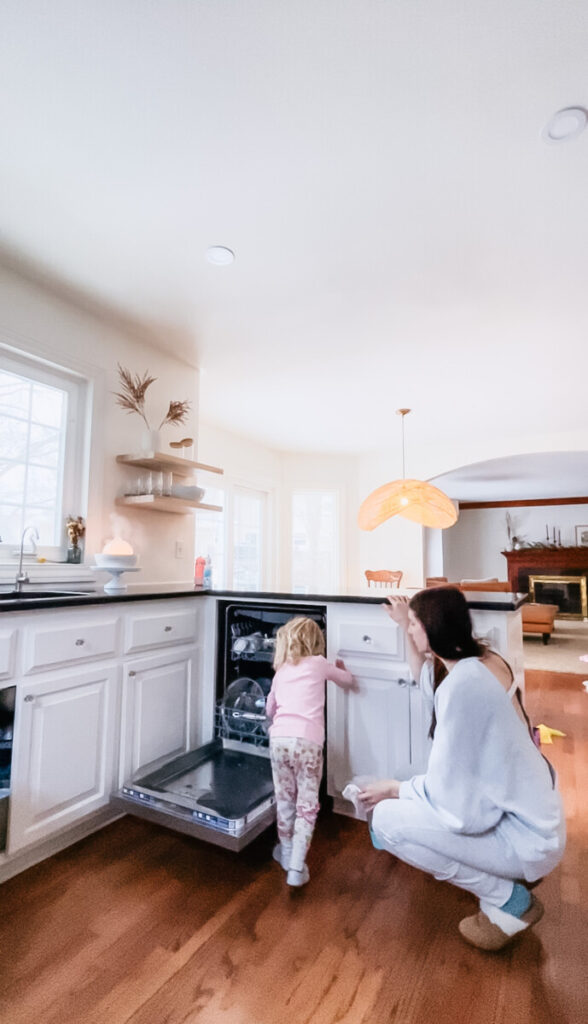
05. Closets & Clothing
Simplifying our wardrobes automatically equals less decision making, less chores, less stimulation and less clutter.
But often, clothes are the hardest to bid adieu with.
Whose clothes are hardest to get rid of? Probably not your spouses 😉 Your own, your sweet littles or baby? My tip is to sift through those clothes last. We need to work our “get rid of” muscles first, so save the clothes that are hardest to get rid of for last.
If you want to do an overhaul of all your clothes:
1. Take out everything (yes, everything) from your closet, dressers, etc.
2. Make piles by color
3. Notice if you have repeats of the same or similar shirts, how many pairs of jeans you have and shoes you own
– If something has a hole, get rid of it.
– If you don’t love love love it, get rid of it.
– If you say to yourself “I’m saving this for…”, get rid of it.
– If you haven’t worn a seasonal item in the last season it was meant for, get rid of it.
– If your dresser drawers are not less than 50% full, get rid of more.
4. Once you’ve sifted through every. single. piece of clothing, put it all back and reorganize it. Maybe you choose to organize by color or by season.
Living minimally doesn’t mean only having 5 pieces of clothing in your closet, it simply means living with an amount that doesn’t add overwhelm to your daily life, and ultimately, it means living without excess.
Simplifying our overall wardrobe will make it easier to keep closets clean and clutter-free. I’m referring to coat closets or back hall closets that store winter gear, seasonal options, boots, extra toilet paper, paper towels, vacuum, etc. But let’s stick to clothes in those closets.
Tips:
– Limit the amount of hangers (leave some available for guests)
– Keep small bins for gloves, etc.
– Rotate coats and other seasonal items throughout the year
How in need are you to simplify your wardrobe?
06. Laundry Room
Simplifying your cleaning supplies and your wardrobe will help in simplifying the laundry room. If you haven’t read those posts, be sure to scroll back!
What is the hardest part of keeping your laundry room clean, organized and simple?
How does having a system for clothes that is simple enough that it feels organized WHILE the laundry pile is piling up?
Having a system before the clothes even make it to the laundry room can lessen stress. And from there, begins the routine of washing, drying, folding and putting away.
A few things that help us as a family are:
– Kids put their dirty clothes in their own hampers
– I’m the only one who brings things to the laundry room (because it’s my system)
– All my laundry cleaning supplies is minimal and organized
– I do one load of laundry per day (except for Sundays)
– Kids bring their clothes back to their rooms & we help them put them away
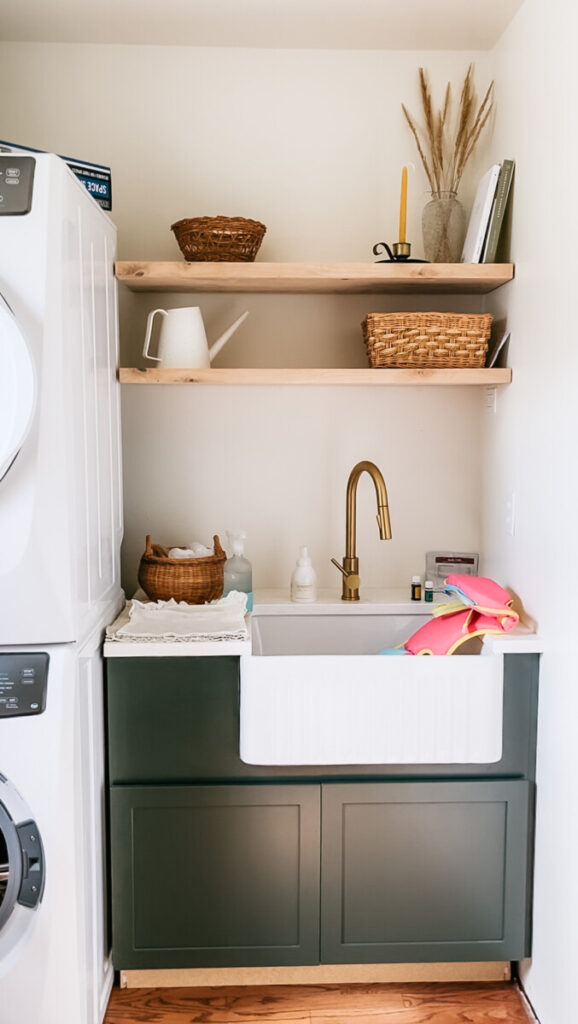
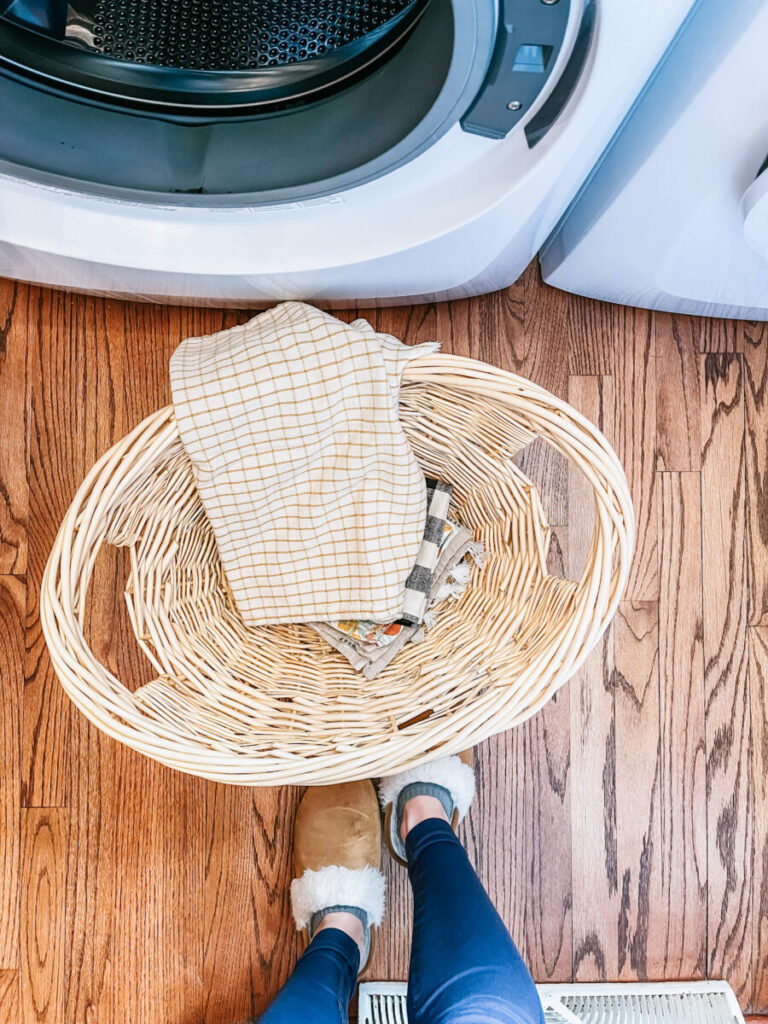

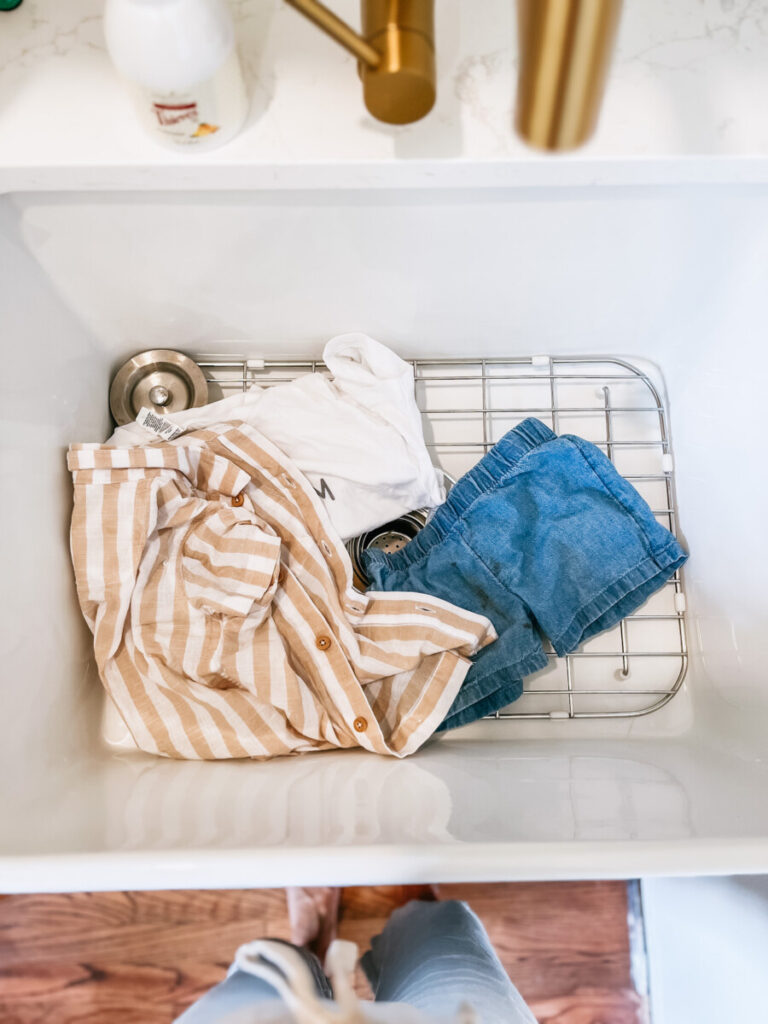

The cleaning supplies I keep in my laundry room: baking soda, epsom salt, white vinegar, essential oils (lavender, cypress, tea tree and lemon), stain brush, thieves household cleaner, thieves dish soap (surprisingly for stains) and of course, the thieves laundry soap.
Delegating tasks and asking for help is key. When my kids were about 1.5 year old I started asking them to help put their clothes away and maybe around 3 years old they help me fold! It’s a family effort.
Here’s a system that has been super helpful the last few years. I’ve been doing one load of laundry each day, from start to finish. I wash specific items on specific days, for example: bedding is on Mondays, bath towels on Wednesday, etc. – this goes along with my weekly cleaning schedule – and makes it easy for me to keep up with laundry instead of saving 6 loads for the weekend.
07. Kid Rooms
What causes the most overwhelm in your kids’ rooms?
I have a feeling this depends on the age of your kids, and if they’re a girl or boy. Listening to other moms, the most common things I hear are toys, little knickknacks and keeping up with clothes. We’ll talk about all of these, but first let’s talk about the purpose of your child’s room.
1. What do you want your child’s room to be for? Play time or rest.
2. What do you want them to feel when walking into their room?
3. How can you create that environment?
As parents, we don’t need to control our kids, we need to create an environment for them to thrive in.
A few ideas:
– If you’re going for a space for play, put their favorite toys in their room, but just a few.
– If it’s a space for rest, have less toys and more books and cozy items. This will reduce stimulation.
Organizing:
– For toys, create a “home” for them to go after they’re done playing with them.
– Have small baskets for knickknacks and if they don’t fit in them, they don’t need to be in their room.
– Clothes need to have a system for laundry and going through to either get rid of or keep.
Having a routine for your child’s room will help! And keep it simple, like this: tidy up once a day, deeper clean once a week and sift through items once a month or seasonally. Make it a habit for you and it will instill good habits in your kids!
Mamas, what kind of space are you creating for your kids?
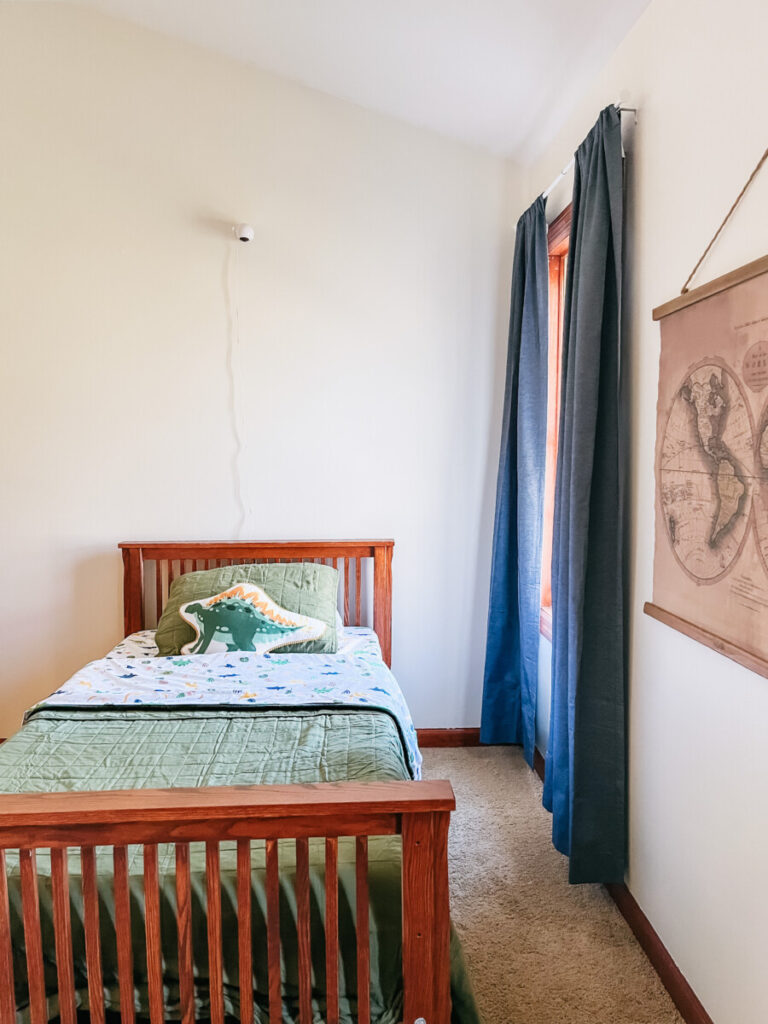

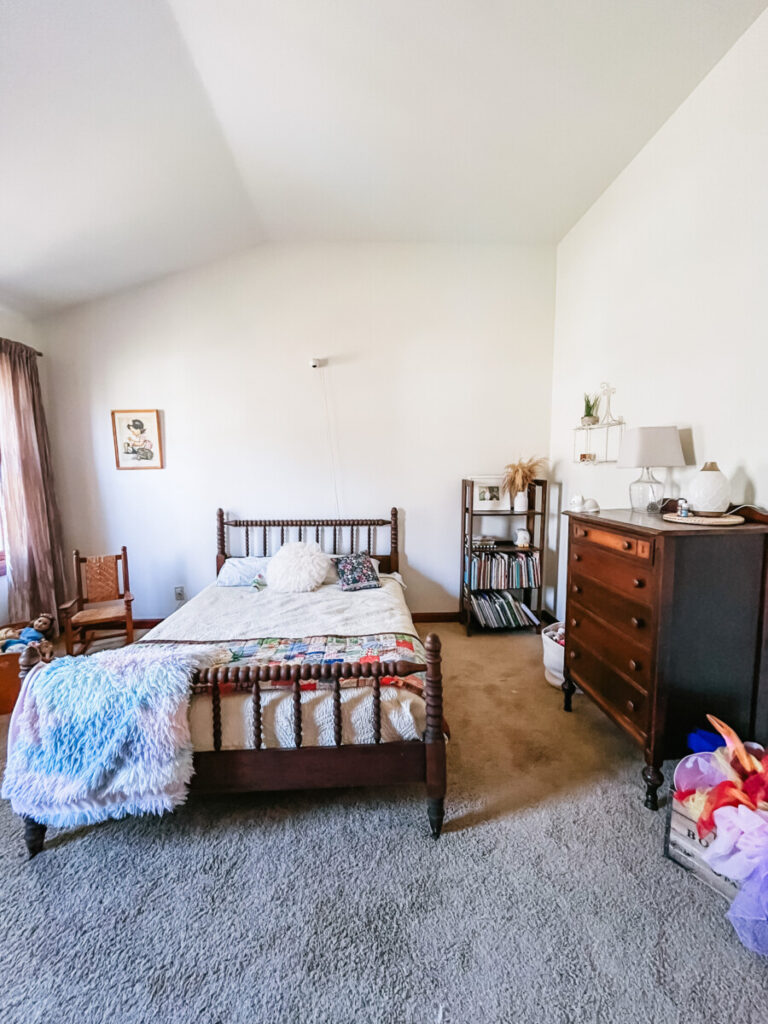
08. Bathrooms
How many bottles of shampoo do you have in your shower that are allllmost empty? I recently had four.
I honestly think bathrooms can be one of the most cluttered spaces. Bathrooms have drawers, nooks and cranies, under-the-sink cabinet space, shower shelves, small closets. And so many things belong in bathrooms, everything from bath toys to hair dryers, q-tips and extra towels.
A simple idea for decluttering a bathroom: Take everything out, ditch the doubles, create an “extras” bin, ditch the chemicals and fragrance, make sure everything has a home and put it all away.
When decluttering, I think about my natural “rhythm” when I’m in the bathroom. From the time I wake up, brush my teeth, wash my face, put on makeup or going from a shower to grabbing a towel, drying off and starting my routine to get ready, I ask myself: how would I (or my husband) be able to do this most efficiently?
To me, efficiency is related to simplicity and organization. This helps in deciding where the extra towels will go, which drawers hold makeup and hair ties and bath toys.
Another question is: how can I make this easy for my kids to navigate?
Simplifying bathrooms takes brain work, so let’s simplify our thoughts about the things we keep in our bathrooms. Here are some common household items that we could often do without a solution to help minimize:
– Multiple half empty bottles of shampoo and conditioner. Could you combine them?
– Full bottles of lotions you don’t love. Ditch ‘em! Especially if they have fragrance and parabens in them.
– Several hair brushes, hair clips, toothbrushes, hair dryers, etc. Either make a designated “extras” bin or get rid of them.
– Kid toys. How many bath toys do you actually want them to have? Make sure there’s a bin for them to go in when bath time is over.
On a scale from organized to cluttered, where does your bathroom tend to lean?
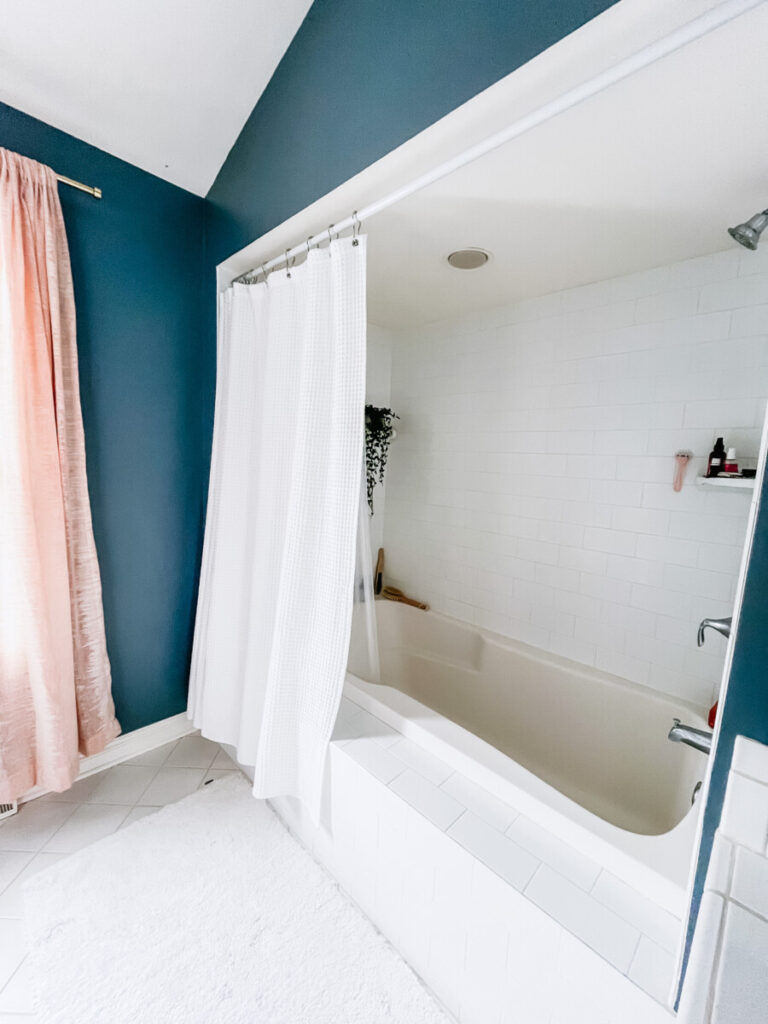
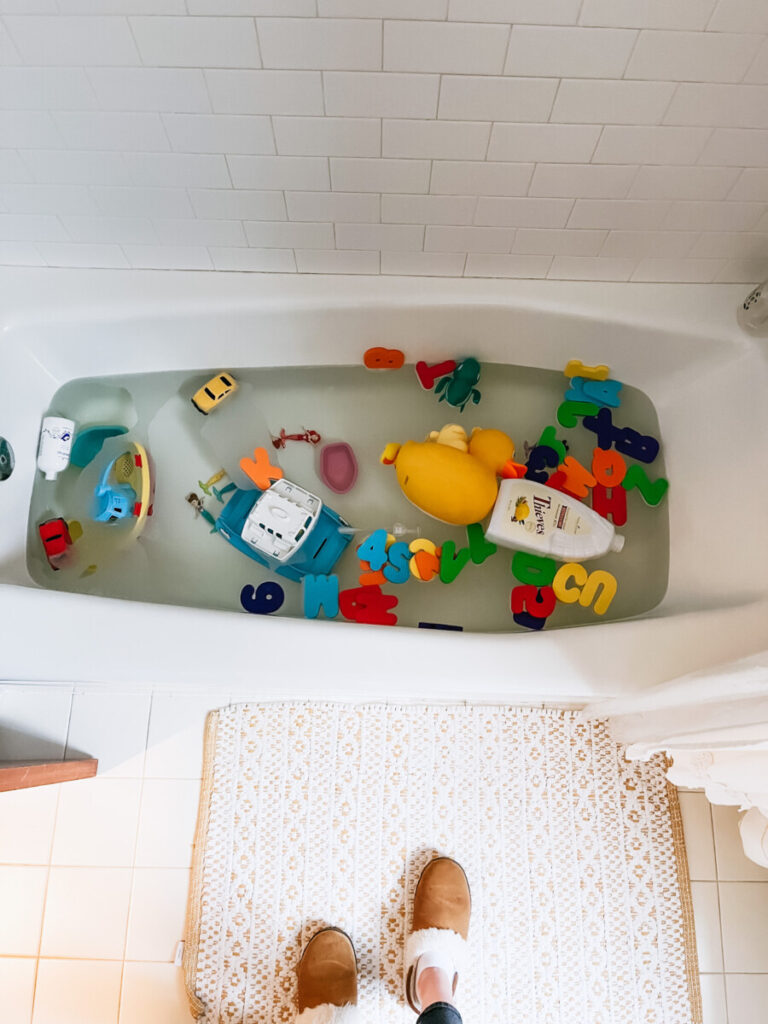
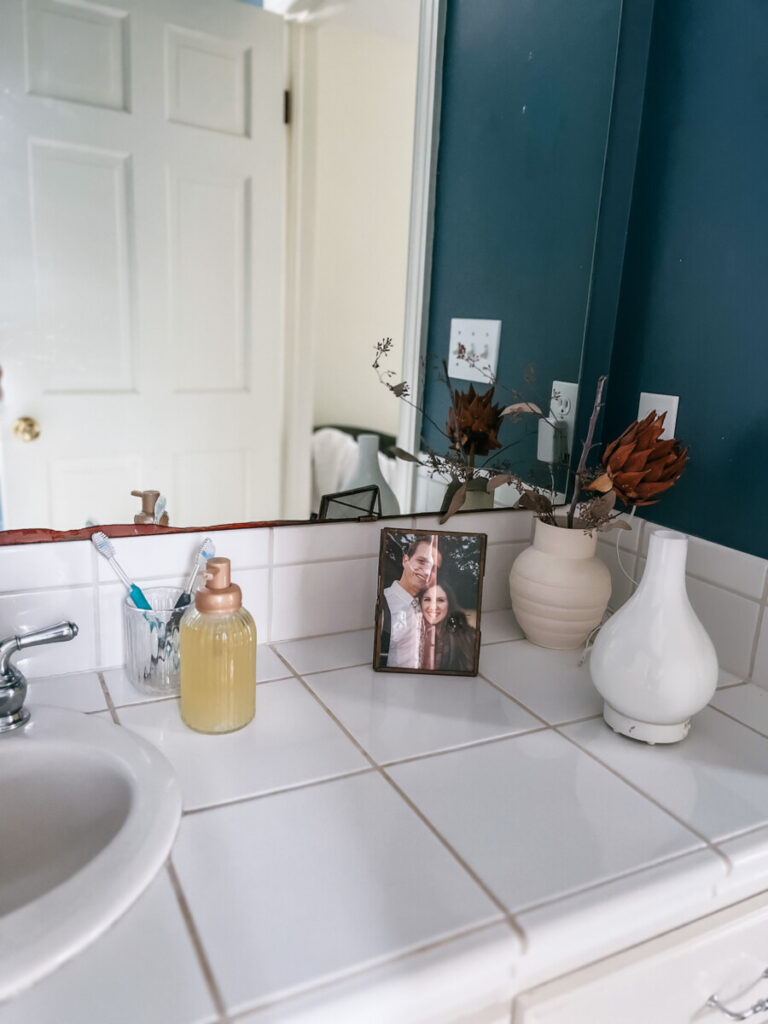
09. Drawers
How full are your drawers? We tend to keep ours 50% full.
In other words, we only own enough items that fill half of the space in the drawers in our home. Every drawer – in our bathrooms, kitchen, bedrooms – is only filled halfway. This automatically reduces clutter, reduces stimulation, reduces decision making and it will even help reduce wrinkles in clothing.
If you’re wanting to simplify your home you don’t need more space, you need less stuff. So empty everything out of your drawers and sift through it. If there is double (or triple) of anything, get rid of it. Maybe there’s a better place for certain items or perhaps a drawer could use drawer organizers to help keep it tidy.
Remember, just because you have the space, doesn’t mean you have to fill it.

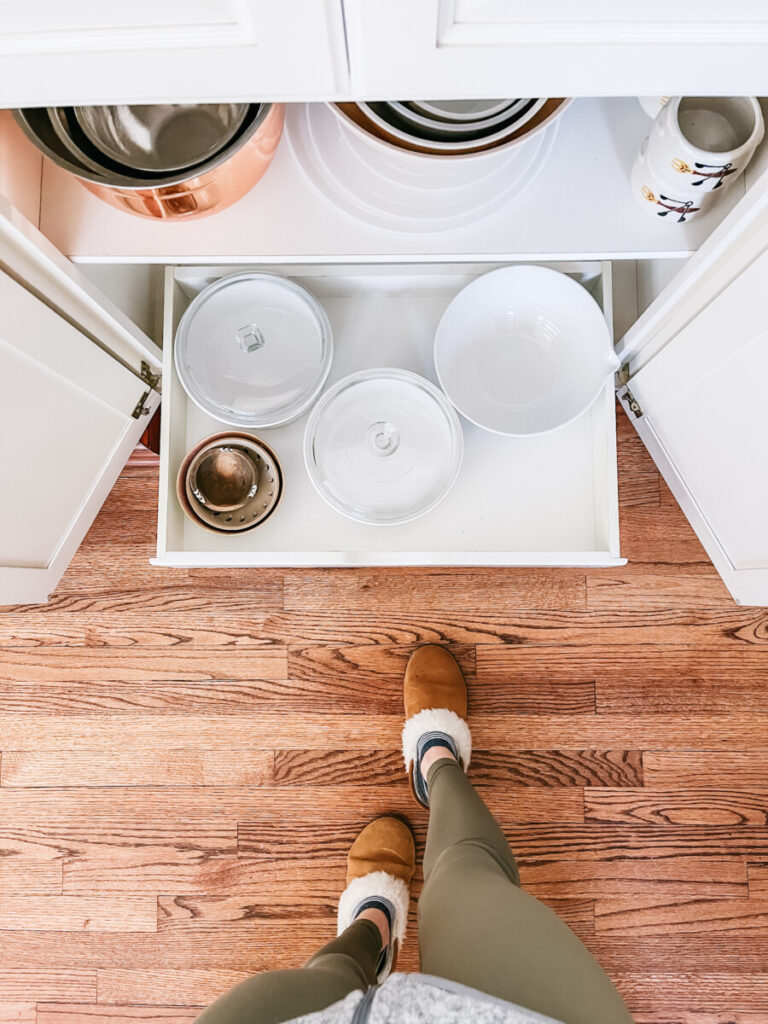
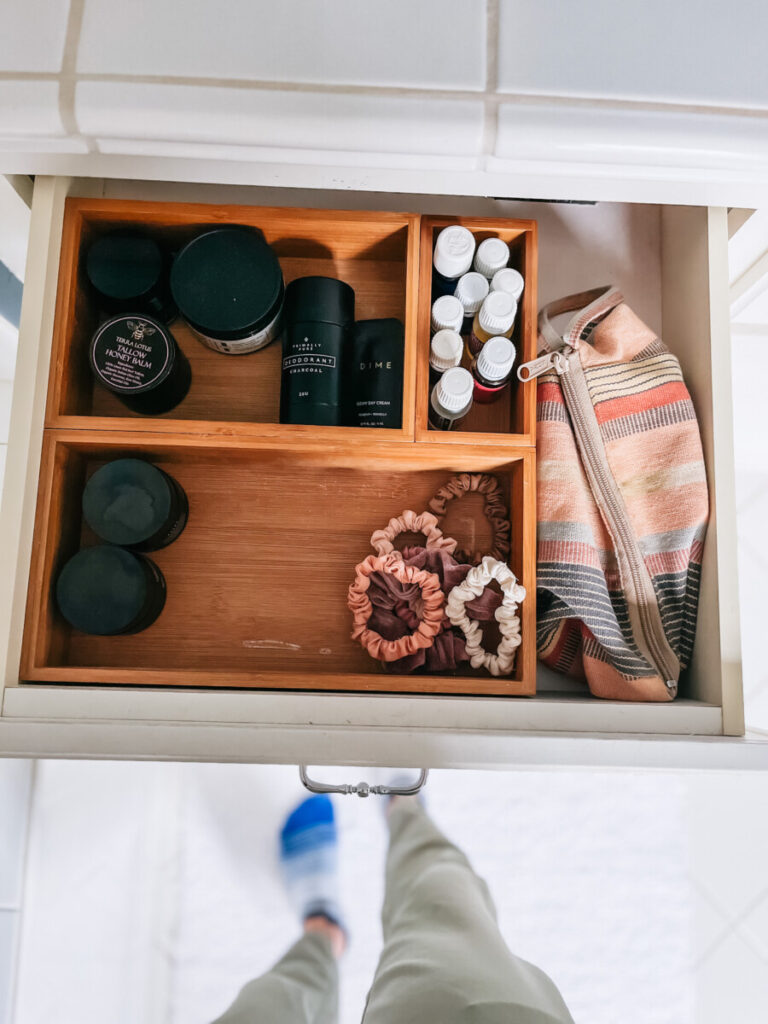
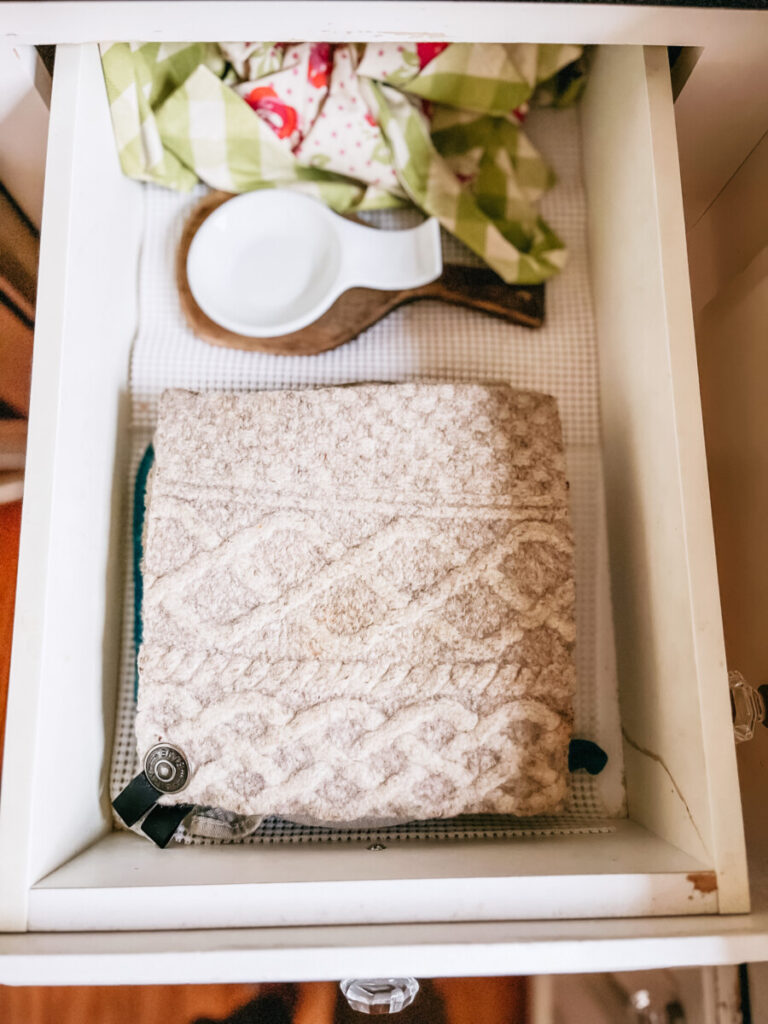
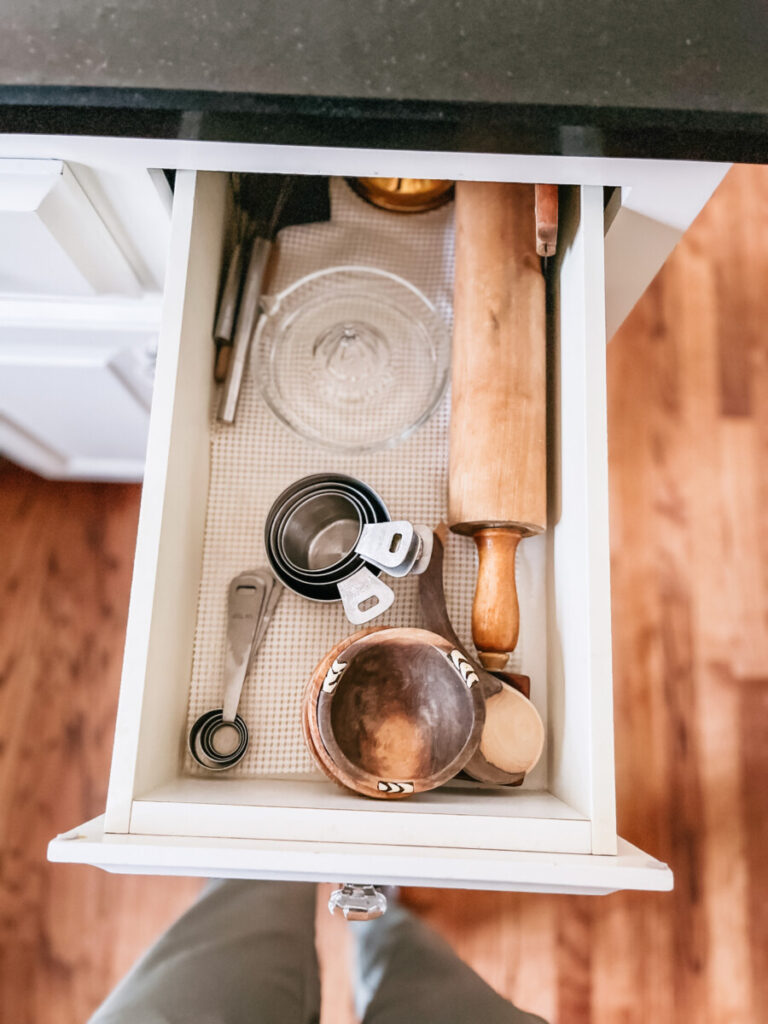
10. Office
I believe this can work for someone who works from home or works in an actual office space.
Since my husband works from home in our home office, which is also our guest bedroom, I asked him for all the advice.
Here’s how he broke it down: be organized by creating systems.
– Have designated folders for taxes, dividers for documents and label everything
– Certain containers depending on when you use it or a file cabinet
– Things you need more often, create a space to easily grab
What gets cluttered the most? Paper documents. He recommends sending the email right away, and put the document away or throw it away as soon as you get it.
Seems pretty simple. Organize and clear action.
What’s the hardest part of your office to keep clean?
11. Flat Surfaces
Alexander was the biggest advocate for keeping our surfaces more minimal. I don’t mind little knick-knacks and he LOVES the minimal look and feel of a clutter-free space.
I never knew how peaceful it would feel until I challenged myself to actually keep flat surfaces clear and clutter-free.
I quickly learned a system is needed for all the little things that tend to collect throughout your days. Things like papers, kids stuff, groceries, items to return, salt and pepper, laundry, kid snacks, diaper bags and simple decor can all easily collect on your counters, washer and dryer, tables and dressers.
My little system? A basket. I bought a medium-sized basket that I keep on our washer throughout the day and in it goes everything that needs to be put away – clean laundry, school papers, toys that go in kids’ bedrooms, papers to be filed in our office – everything that would normally collect and create clutter goes in the basket. And once a day I bring the basket upstairs, put things away and the next morning I bring it back downstairs emptied and ready to be filled.
Try it out for a week or two! Tell everyone in your family about your new little system too. And you don’t even need to buy a basket, just go find a small to medium-sized basket or bin, fill it and empty it. Fill and empty. Do it until it becomes routine.
Where do you and your family tend to place items that eventually turn into clutter?
12. Linens & Extras
Where do you keep your linens and towels and extras?
When it comes to having extras of things, it’s good to remember that it’s not about the space you have, or lack thereof. It’s about the stuff you choose to have in your home.
I personally think it’s nice to have extra items but it easy for us to have too much because of our scarcity mindset. When the “what ifs” sink in too deep we tend to cling to what we own or make purchases based on fear.
Think through and ask yourself:
1. The number of people in your family. That should help with how many beds you need to have sheets for, how many towels and toothbrushes.
2. How often do I host or have guests stay the night?
3. What do people ask for when they stay over?
4. What do I like to have when I’m staying at someone else’s home?
We’ve lived in a small condo without a linen closet and in a small apartment without extra closet space. Now living in a bigger home, we have extra closet space and we host more often, so we definitely have more “extras” than we’ve ever had. But even in our smaller homes we still created room for extras, even if it was folded and shoved under a bed.
Here are some things we currently do:
– We organize our towels by bathroom. Kids have their own, guests have their own, and me and my husband keep our towels in the master bathroom
– We have 2-3 sets of sheets per bed
– There’s an “extras” basket in our linen closet for guests. This has everything from shampoo to bars of soap, toothbrushes and q-tips.

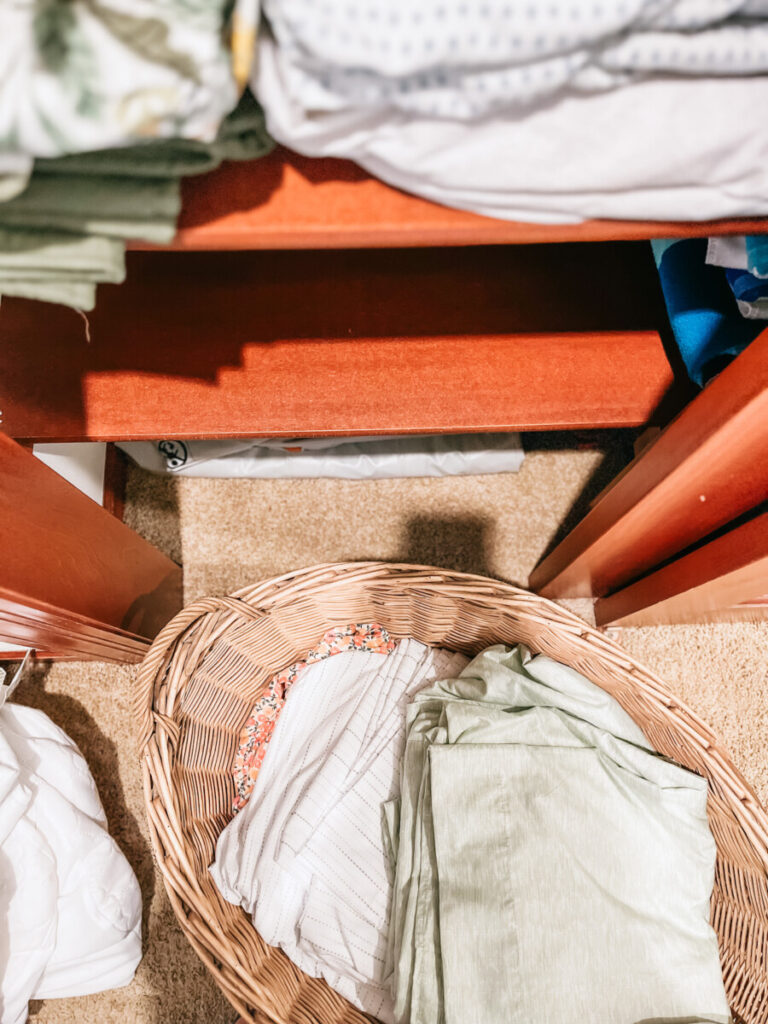
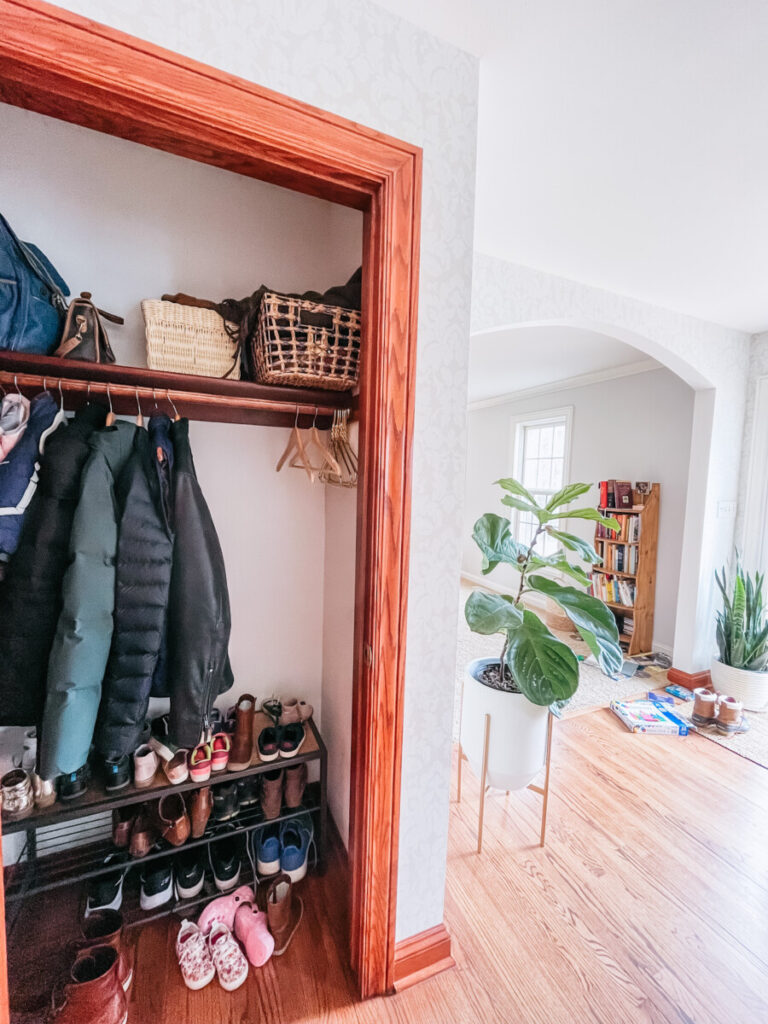
So you simplified, now what?
A simplified mindset!
This needs to become a lifestyle. A cumulation of small choices.
Remember what you want to feel when walking through your home.
What purpose does your home serve?
What is the function of this space?
Over the last decade, in my pursuit towards a simplified life, the times when I’ve struggled the most are when my mindset about the things I own and the space I’m living in become more important than the lifestyle I’m pursuing and life I’m creating for my family.
When moving forward, think about future purchases before they arrive. If the item will not bring life, nourishment, peace and serve a purpose for your home, don’t spend money on it.
Create rhythms, schedules and simple systems that allow you opportunity and headspace to maintain what you simplified.
The end goal isn’t about having a perfectly curated and tidy home. The goal is to love living the life you’ve created with the people you love the most and being generous with what you’ve been given. And for me, when my home is more simple, the more time I get with my family and we enjoy what we already have.
I hope you got immense value out of this post. I hope it served you and your family and your beloved home.
From my home to yours, xx